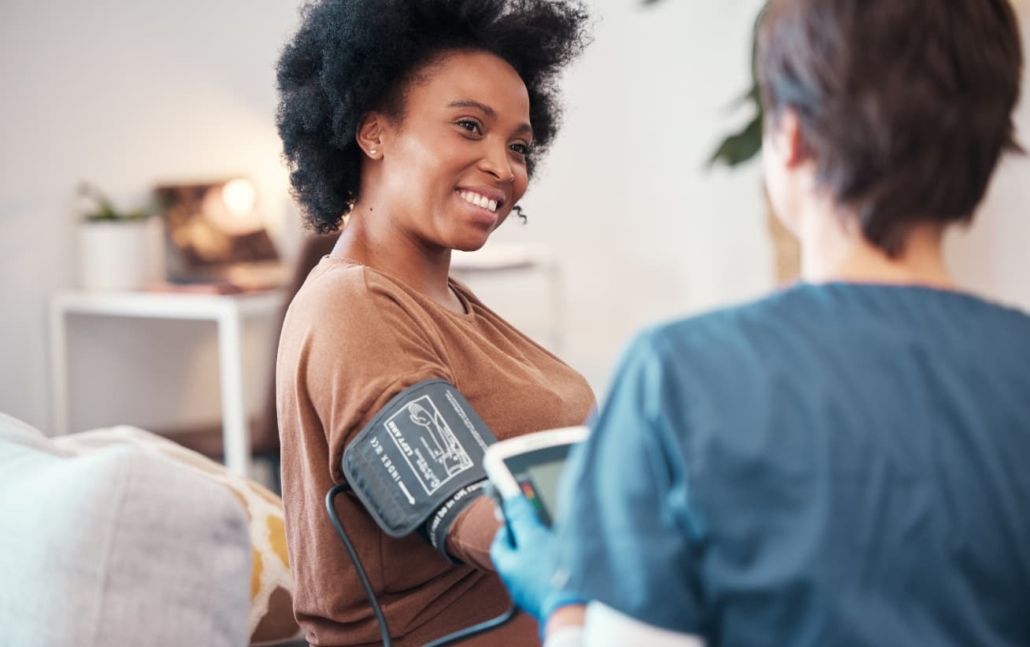Coming out of the shadows: a new era for women’s health?
The historically overlooked field of women’s health is experiencing a potential renaissance. Sarah Nurgat examines the gender health gap’s roots in research disparities and funding shortfalls, while highlighting recent policy changes, international initiatives, and femtech innovations signalling progress. The author emphasizes the need for sustained momentum and critical evaluation to ensure meaningful improvements in women’s health outcomes and address longstanding inequities in healthcare.

Sarah Nurgat
Women’s health has long been described as a neglected area of research funding in an overwhelming number of studies and even several popular books[i]. However, the recent spotlight shone on the topic at the 2024 World Economic Forum Annual Meeting in Davos, changes in international policies and the upsurge in products and services addressing the women’s health market suggest that the tide may be beginning to turn.
To what extent is this once underfunded, under-researched and undervalued field starting to emerge from the shadows? And what might this mean for the future of women’s health?
The research attention gap
Women’s health is often reduced to sexual and reproductive health – conditions that exclusively affect women. But biologically, cell-based differences mean that there are many conditions that are experienced differently by women and men, whether this is in how they present, how common they are or how they are managed and treated. When analysing the gender health gap, it is essential that all these conditions are taken into account to build a complete picture and understand the true extent of the neglect of women’s health.
In countries including the UK, women spend longer in ill health than men, despite higher female life expectancy. And in numerous areas of healthcare, women are at a disadvantage: studies have shown that women are more than twice as likely to die after a heart attack than men[ii], and that gender stereotypes significantly affect pain estimation, leading to undertreatment in women[iii]. Additionally, women tend to be disproportionately affected by diseases that are most debilitating in terms of disease burden, including depression and headaches[iv].
While the reasons for this health gap are myriad and complex, one major contributing factor is the serious, long-standing neglect of women’s health in medical research, resulting in a lack of specific guidelines for the diagnosis and management of certain conditions in women – both those specific to women and those that present differently in men and women.
Until 1994, all women of childbearing age were prohibited from participating in clinical trials as a result of medical and legal concerns following the thalidomide scandal[v]. According to a key 2001 study, the since-discredited belief that women would have the same response to treatments as men, and could therefore be safely and effectively treated with therapies only tested on men, also contributed to the exclusion of women from clinical trials to prevent fluctuating hormones potentially impacting data[vi]. And while policy changes requiring studies to include both male and female participants[vii] have gone some way to remedying the situation, as recently as 2015, 23 of the 25 participants in a study of a drug touted as the ‘female Viagra’ were male[viii].
With regard to funding, too, research into women’s health lags behind, with only 1% of healthcare research and innovation being invested in female-specific conditions (excluding oncology) according to McKinsey & Company[ix]. Furthermore, conditions that affect mainly or only women, such as migraines, headaches and endometriosis, for example, are significantly underfunded compared with the burden they cause[x].
And this is despite the socioeconomic cost associated with women in poor health: recent figures suggest that menopause alone could be responsible for global productivity losses of over $150 billion per year[xi], and addressing the gender health gap could add at least $1 trillion to the annual global economy by 2040[xii].
Signs of progress
Although women’s health has long been neglected by both research and industry alike, there are signs that the status quo is starting to shift, as demonstrated by a number of recent developments. Changes in legislation and national policies suggest increasing awareness of the need to better understand and cater for women’s health issues.
In 2023, Spain became the first European country to introduce paid medical leave for those suffering from severe period pain as part of a package of laws aiming to encourage social progress[xiii]. In the UK, the Equality and Human Rights Commission recently published new guidance on the legal obligations of employers with regard to menopause. According to this updated guidance, menopause symptoms that have a “long term and substantial impact on a woman’s ability to carry out normal day-to-day activities” could be considered a disability and thus require the employer to make reasonable adjustments such as providing cooler workspaces and rest areas, relaxing uniform policies and allowing staff to work from home[xiv].
It is likely that governments will continue to introduce new laws and further measures to close the gender health gap as national and international initiatives gain momentum. The UK Government’s first Women’s Health Strategy for England was launched in 2022 and has given rise to a number of achievements including the publication of a dedicated page for women’s health on the NHS website and an investment of £25 million to expand Women’s Health Hubs across the country[xv]. Further initiatives include the 2023 White House Initiative on Women’s Health Research, for which €100 million in funding was announced in February this year, as well as the newly-launched Global Alliance for Women’s Health under the auspices of the World Economic Forum[xvi].
As the launch of the Global Alliance for Women’s Health suggests, the financial world is also beginning to show greater interest in women’s health. In January 2024, the World Economic Forum in Davos devoted three sessions to increasing funding and research into women’s health, highlighting the potential boost to the global economy that would result from closing the gender health gap[xvii]. But this is perhaps unsurprising when we consider the opportunities the women’s health market presents and its track record over recent years, as demonstrated by the success of femtech. Defined as “solutions to conditions that solely disproportionately or differently affect females, women and girls”[xviii], femtech crossed the $1 billion global VC investment mark in 2021[xix], and its market potential is estimated at $50 billion by 2025[xx]. This is a vast commercial opportunity that is yet to be fully explored.
Words of caution
Given the growing numbers of services, devices and products dedicated to different aspects of women’s health, it is vital that accountability is ensured, particularly where financial motives may take precedent over the laudable objectives of empowering women and closing the gender gap. Indeed, the portrayal of menopause as a “medical problem” in higher-income countries has come under fire, especially where there is a commercial interest for companies to encourage this[xxi]. It is also critical that ethical concerns surrounding medical accuracy and data privacy in the femtech sector are addressed to ensure that women are not exploited by a market that claims to champion their needs.
Ultimately, whether or not women’s health can fully emerge from the shadows will depend on its ability to maintain and increase the current momentum. Further research is clearly needed: not only into conditions specific to women but also into differences in how men and women experience conditions and how women react to treatments. National and international initiatives must continue breaking down barriers to women’s health research by driving investment and highlighting opportunities for improvement. At the same time, it is essential that critical appraisal of the situation is carried out at regular intervals if genuine improvements to women’s health outcomes are to be achieved.
About the author
Sarah Nurgat, Cient Services Director at marketing agency and analyst ThoughtSpark, has extensive experience working with life science businesses, with a focus on medical devices. Her client portfolio also includes marketing, software and property clients, to name a few. Sarah works closely with clients helping to strengthen their visibility in national and international media. A linguist with a background in French translation, she understands the subtleties of working with global markets. Outside of the office, Sarah is either honing her German or going for a run and gossip with a friend. In 2024, she was named a winner of Management Today‘s prestigious 35 Women Under 35 awards.
References:
[i] For example, Caroline Criado Perez, Invisible Women. [United States], Abrams, 2019.; Elinor Cleghorn, Unwell Women: Misdiagnosis and Myth in a Man-Made World. New York, NY: Dutton; 2021.; Marieke Bigg, This Won’t Hurt: How Medicine Fails Women. [United Kingdom], Hachette, 2023.
[ii] Vogel B, Acevedo M, Appelman Y, et al. The Lancet women and cardiovascular disease Commission: reducing the global burden by 2030. Lancet. 2021;397:2385–2438.
[iii] https://www.ucl.ac.uk/news/2021/apr/analysis-womens-pain-routinely-underestimated-and-gender-stereotypes-are-blame#:~:text=An%20additional%20experiment%20showed%20that,to%20report%20pain%20than%20men
[iv] Arthur A. Mirin. (2021). Gender Disparity in the Funding of Diseases by the U.S. National Institutes of Health. Vol. 30, No. 7.
https://www.liebertpub.com/doi/10.1089/jwh.2020.8682
[v] Liu KA, Mager NA. (2016). Women’s involvement in clinical trials: historical perspective and future implications. Pharm Pract (Granada). 2016 Jan-Mar;14(1):708. https://www.ncbi.nlm.nih.gov/pmc/articles/PMC4800017/
[vi] Institute of Medicine (US) (2021) Committee on Understanding the Biology of Sex and Gender Differences; Wizemann TM, Pardue ML, editors. Exploring the Biological Contributions to Human Health: Does Sex Matter? Washington (DC): National Academies Press (US). 1, Introduction. Available from:
https://www.ncbi.nlm.nih.gov/books/NBK222294/
[vii] White J, Tannenbaum C, Klinge I, Schiebinger L, Clayton J. (2021)The Integration of Sex and Gender Considerations Into Biomedical Research: Lessons From International Funding Agencies. J Clin Endocrinol Metab. Sep 27;106(10):3034-3048.
[viii] Rick Harrison. (2016). A Drug for Women, Tested on Men.
https://medicine.yale.edu/news-article/a-drug-for-women-tested-on-men/
[ix] McKinsey & Company, https://www.mckinsey.com/industries/healthcare/our-insights/unlocking-opportunities-in-womens-healthcare
[x] Kerri Smith. (2023). Women’s health research lacks funding – these charts show how. https://www.nature.com/immersive/d41586-023-01475-2/index.html
[xi]Burden, L. (2021) Women Are Leaving the Workforce for a Little-Talked-About Reason https://www.bloomberg.com/news/articles/2021-06-18/women-are-leaving-the-workforce-for-a-little-talked-about-reason?embedded-checkout=true
[xii] World Economic Forum. (2024) Closing the Women’s Health Gap: A $1 Trillion Opportunity to Improve Lives and Economies https://www.weforum.org/publications/closing-the-women-s-health-gap-a-1-trillion-opportunity-to-improve-lives-and-economies/
[xiii] Office of the High Commissioner for Human Rights (OHCHR), (2023) Spain: UN experts hail new feminist legislation
https://www.ohchr.org/en/press-releases/2023/02/spain-un-experts-hail-new-feminist-legislation
[xiv] Equality and Human Rights Commission. (2024) Menopause in the workplace: Guidance for employers https://www.equalityhumanrights.com/guidance/menopause-workplace-guidance-employers
[xv] Butkovic, M. (2024) The State Of Women’s Health In England And The Journey Ahead https://www.forbes.com/sites/marijabutkovic/2023/05/24/the-state-of-womens-health-in-england-and-the-journey-ahead/
[xvi] World Economic Forum. About the Global Alliance for Women’s Health. https://initiatives.weforum.org/global-alliance-for-womens-health/about-alliance
[xvii] World Economic Forum. (2024) Why the women’s health gap exists – and how to close it – according to experts at Davos. https://www.weforum.org/agenda/2024/01/women-health-davos-2024/
[xviii] Susan Kelly. (2022). Friday Q&A: FemTech Focus’s Barreto discusses women’s health innovations, funding challenges. https://www.medtechdive.com/news/FemTech-Focus-Barreto-women/635745/
[xix] Priyamvada Mathur. (2021). Flo raises millions as femtech frenzy continues. https://pitchbook.com/news/articles/femtech-startups-venture-capital-flo-women-female-funding
[xx] Frost & Sullivan (2018). Femtech—Time for a Digital Revolution in the Women’s Health Market.
https://www.frost.com/frost-perspectives/femtechtime-digital-revolution-womens-health-market/
[xxi] Brown, L et al. “Promoting good mental health over the menopause transition” The Lancet. doi: https://doi.org/10.1016/S0140-6736(23)02801-5



